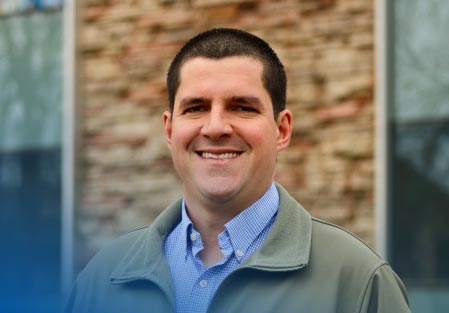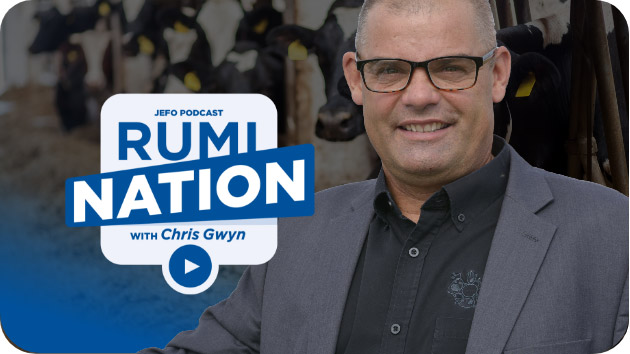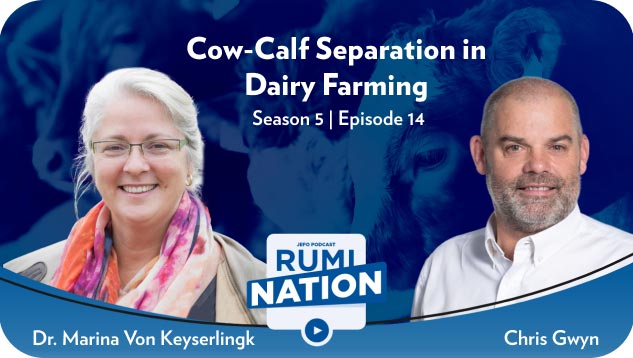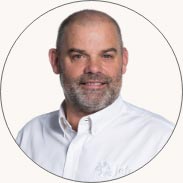RumiNation | S05 : E13
Exploring Opportunities and Challenges in Dairy Beef Feeding Systems
Brought to you by Jefo Nutrition
Share now!
Did you enjoy this episode?
Share now!
Our guest - Dr. Pedro Carvalho
Dr. Pedro Carvalho is an assistant professor and feedlot specialist at AgNext – Colorado State University. Before joining AgNext, Pedro was an assistant professor and feedlot specialist at UC Davis, located at the Desert Research and Extension Center. After working in the beef industry in Brazil, Pedro moved to the U.S. to receive his master’s degree in animal science from the University of Illinois, and his PhD in animal science from Penn State University. In his current position, he conducts applied research projects in feedlot systems and methods to enhance beef production from dairy bull calves.

Timestamps & Summary
Dr. Greg Eckerle (02:01)
In your opinion, what can we expect to see numbers of dairy and dairy and beef crosses in feedlots in the future?
Dr. Pedro Carvalho
That’s really a hot topic right now. I’ve been working with Holstein since I started grad school, and in the past few years, we’ve seen this increasing the utilization of beef semen in the dairy cows. […] There are a lot of factors that are affecting that. The increasing use of sex semen and the decrease in the beef cow herd, probably pushing that a lot. And I think it’s something that came to stay. I think a lot of people are learning how to do that in the dairy industry. We still have to remember that the main goal of a dairy farmer is getting their cow pregnant. But I think that it’s a great opportunity for dairy farmers to increase their profitability. And the data that we’ve seen right now also shows a really good opportunity for feedlot producers. […]
Total numbers might still be the same because basically, the number of dairy cows is still the same. But what has changed is basically the genetics of those bull calves that are coming to our feedlot.
Dr. Greg Eckerle (05:09)
As we’re pushing the supply chain and looking at these genetics of transitioning the dairy to utilizing more beef semen, can we expect to see specific British breeds? Or is it just going to be predominantly black Angus? Or would you propose that maybe if we want to look at some other traits, some continental or some exotic, for southern calf markets would be included in the mix?
Dr. Pedro Carvalho
That’s an excellent question. For the past year and a half, I’ve been talking a lot about this. When we look at the numbers before 2017, we used to have about two and a half million doses of beef semen on the market every year in the US. From 2017 to 2021, we had an increase from two and a half to close to 9 million. And that’s how much we’re expecting. So, over 6 million doses of increase. […]
About half of those are coming from Angus. So, we expect that the majority of those crosses are going to be black-headed animals. In second place, we’ve seen a lot of Limousin crosses and then Simmental. And the Charolais breed is the one that has increased a lot. They went from less than 25,000 doses being sold in 2017 to close to 600,000 in 2021. So that’s a huge increase. […]
So, we’ve seen a good increase in continental breeds, but Angus is still the majority of them. One thing that I can tell you, Greg, for sure, I don’t think we are going to be talking about a specific breed. We’ve seen more variation within breeds than when we compare between or among different breeds. Even the Angus breed. […]
Dr. Greg Eckerle (15:02)
[W]hen is the most critical point of the feeding of the dairy beef Holstein or dairy beef animal. And then what would be their typical starting period? Or do they have two?
Dr. Pedro Carvalho
It always depends. And it’s going to depend a lot on the time of the year. We’ve seen California during summertime. That creates a much bigger challenge than during the wintertime. […]
But on the diet aspect, another thing that we’ve done over the years, and Dr. Richard Zing, who I had the pleasure to work a lot with while I was in California, we would divide the feeding system into three different phases. The 300 days. we would divide into three groups of 100 days. So, those 1st 100 days on feed would be the most critical ones, I would say, especially in the protein requirements. […]
Dr. Greg Eckerle (24:21)
And then to wrap up today, what would be three of your top take-home messages of working with dairy beef crosses or straight Holsteins in a feeder situation?
Dr. Pedro Carvalho
I think on the Holstein side, I would push them from start to finish as much as we can be consistent. They have good genetics, they marble well, and they can produce a really good quality on the beef. On dairy, I think right now there are more questions than answers. I do think that instead of looking for the best breed, we may be looking for the best bull in each breed. […]
Something that we are planning to be doing in the near future is, and we didn’t touch on that at all, understanding how much the early life management of those calves can impact later. […]







